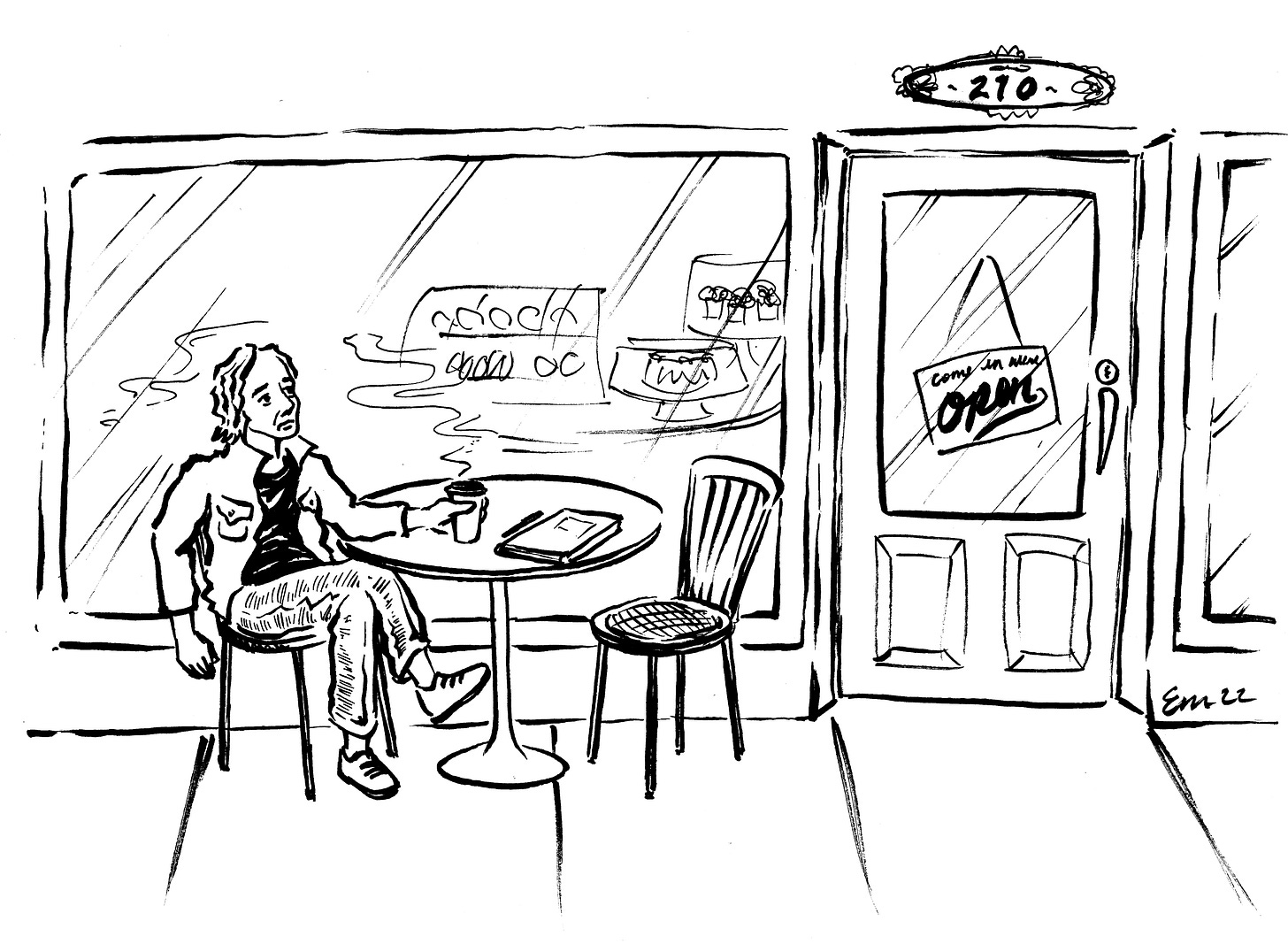Every writer with a romantic synapse in their brain can picture themselves sitting at a café on the Left Bank, drinking an espresso or au lait while writing words that are so existentially self-referential that delusions of James Joyce and Jean-Paul Sartre can’t help but dance in their head.
I sat in a café on the Left Bank once, but I didn’t write anything. It felt like every sentence that could possibly be written there had already been written. In virtually every language. I was at a loss for words. They’d all been taken by other people.
But I have written in a lot of coffee shops in a lot of places. Someday, I’ll make a list. Maybe a map. Circling out from ground zero: Amy’s Bakery Arts Cafe,1 The Works, and the iconic Mocha Joes in my hometown of Brattleboro, Vermont, east to Prime Roast in Keene, south to Haymarket in Northampton, and southeast to The Edge in Providence. All of which have served as temporary offices.
Further afield, my literary refuges have reached as far west as the Bean Bag Café in San Francisco and as far east as The New Café (a.k.a. Il Nuovo Caffè) in Florence. I’ve been heartbroken by existentially weak drip coffee in a cheap hotel in Santee, South Carolina where I was stuck for three days. And I’ve been blessed by the transcendent rush of an authentic cortado in the Yucatan. I can’t remember the specific taste of the coffee at these places. But I remember what we used to call the gestalt of all of them. Someone should do an idiosyncratically subjective guide to good independent coffee shops. I just looked. Of course, Food & Wine already did one: “The Best Coffee Shops in Every State.”
I wrote some notes for this essay about ten years ago at Kudu in Charleston, South Carolina. Sitting at one of the three seats at the bar. The place blends in so well with the neighborhood that, from the outside, it looks like the home of some obscure liberal arts department that the College of Charleston wishes would just go away. They make a remarkable “True Italian Cappucino,” with just enough steamed milk to know it’s there, but little enough so you can still taste the espresso.
Inevitably, many of these shops are in college neighborhoods. Which appear to have become—even in the South—so color-blind that you begin to think we actually accomplished something in the ’60s. The only demographic group that stands out now is 60+ somethings. In other words, me.
Brattleboro —> San Francisco —> Florence —> Paris —> Yucatan—> Brattleboro. They’re all great places to write. But there’s always the risk of becoming existentially self-referential.
Case in point.
Amy’s is more of a permanent office. During the pandemic, when it was closed, people I didn’t know would come up to me and ask, “Where do you work now?” (Unwritten rule: if you’ve been working at a coffee shop all morning and there are no tables for people coming in for lunch, it’s time to go…)





"AU LAIT." Isn't that what the matador yells when he stabs the bull? Is he planning to take a coffee break before finishing the poor beast off?